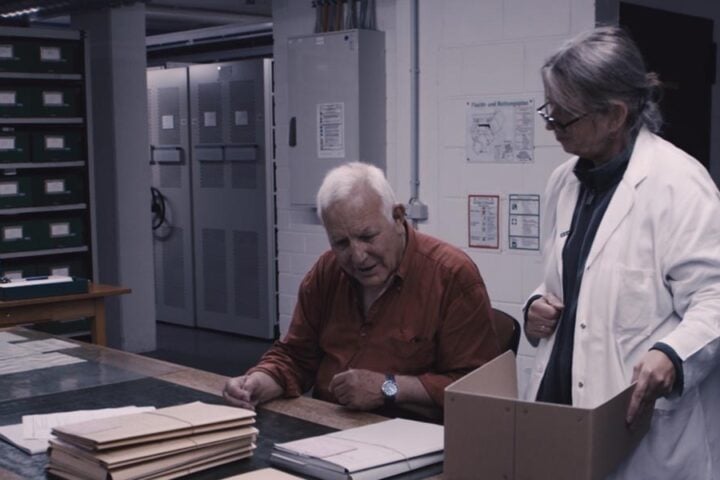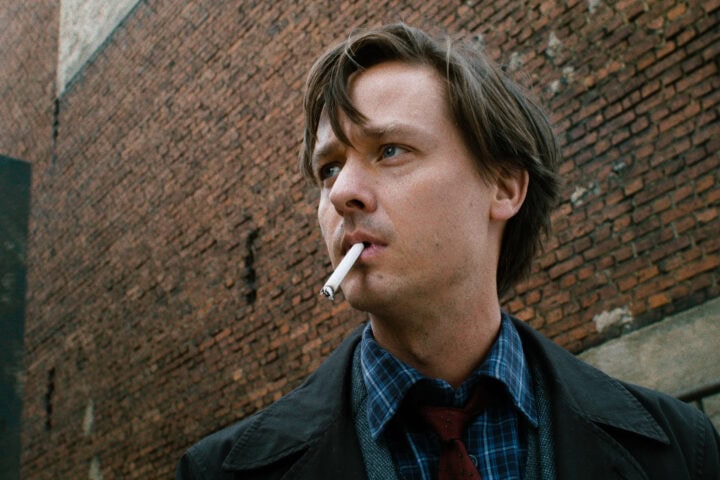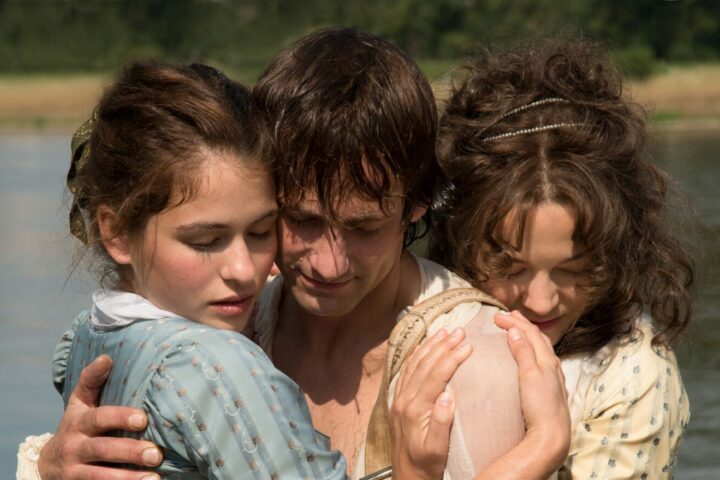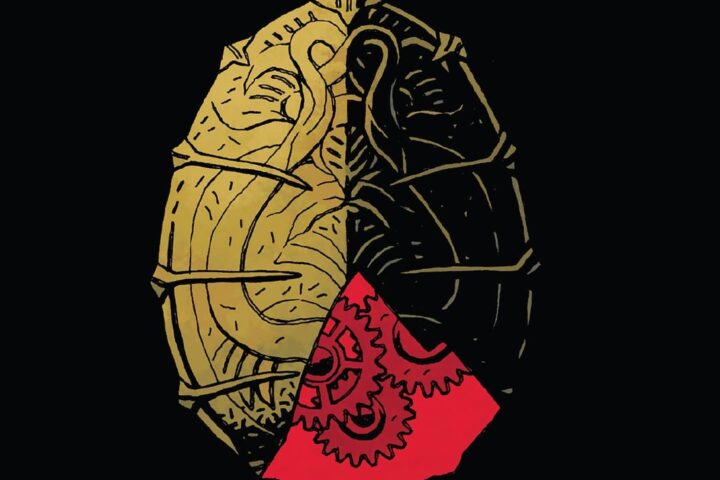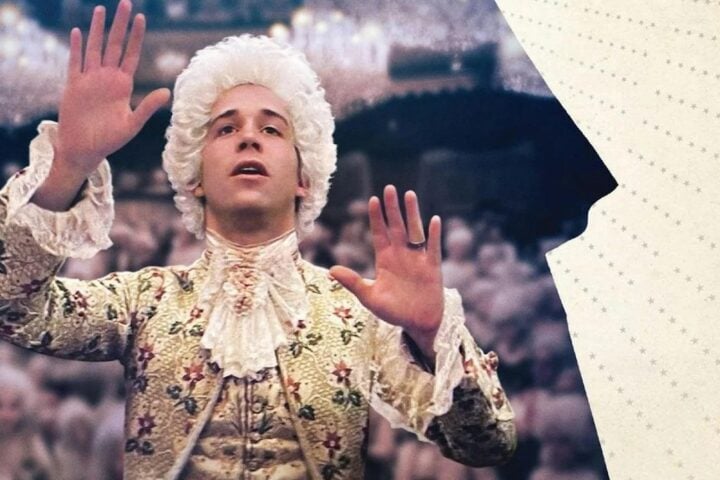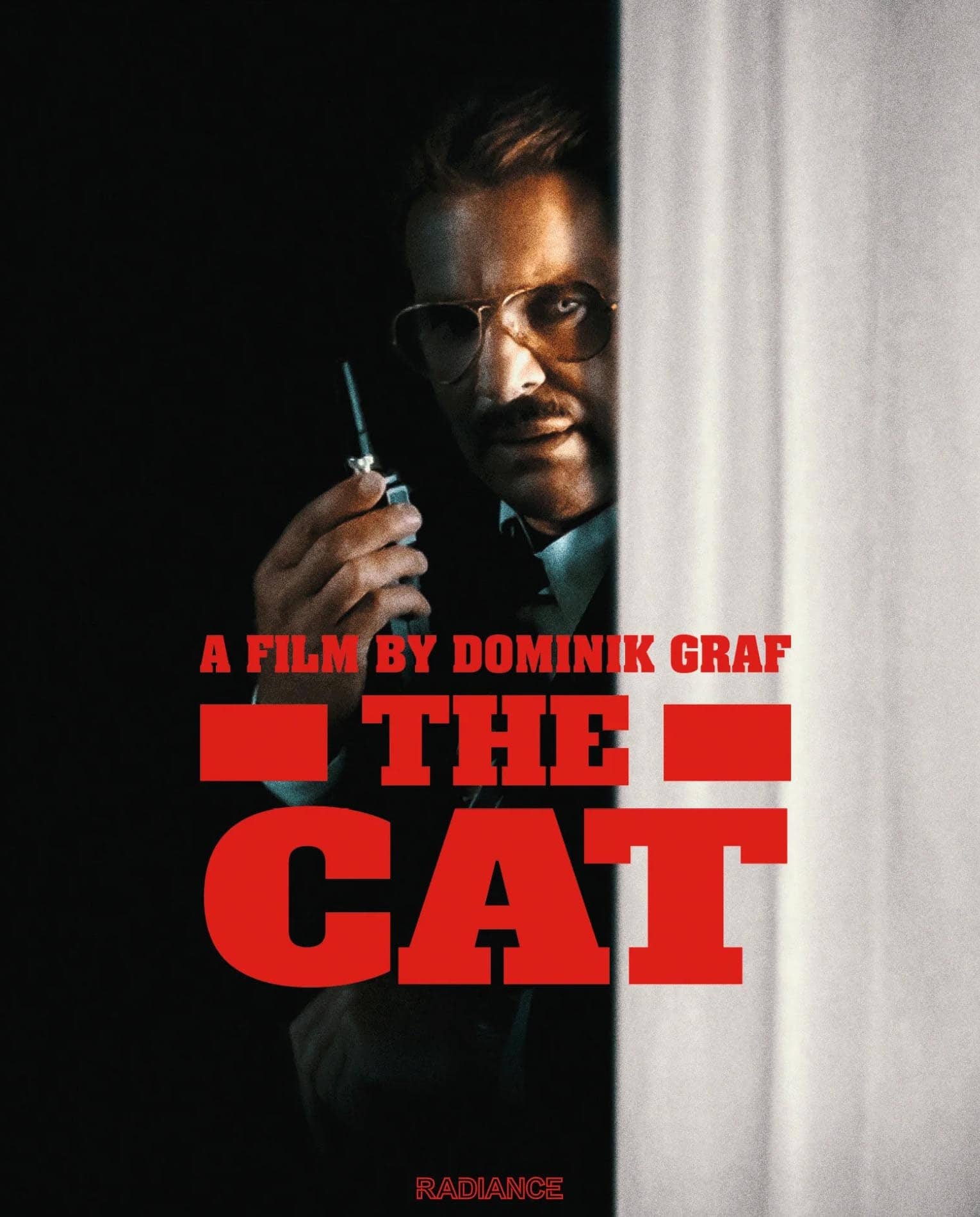 The elaborate heist that kicks into motion early into Dominik Graf’s The Cat effectively douses the steamy sex scene that opens the film with ice cold water. As the well-tanned, brawny Probek (Götz George) stands naked at the window of the low-lit hotel room in which he’s just gotten his rocks off, and from where he’ll orchestrate much of his exacting plan, one can’t help but think of the antiheroes in Michael Mann’s crime films. That’s especially true once Probek dons a shirt and tie and meticulously puts together his assault rifle and sets up his telescope to check out the bank on the other side of the courtyard.
The elaborate heist that kicks into motion early into Dominik Graf’s The Cat effectively douses the steamy sex scene that opens the film with ice cold water. As the well-tanned, brawny Probek (Götz George) stands naked at the window of the low-lit hotel room in which he’s just gotten his rocks off, and from where he’ll orchestrate much of his exacting plan, one can’t help but think of the antiheroes in Michael Mann’s crime films. That’s especially true once Probek dons a shirt and tie and meticulously puts together his assault rifle and sets up his telescope to check out the bank on the other side of the courtyard.
Indeed, Probek is the very image of the sharply dressed, highly professional criminal. And he takes on his duties in a god-like fashion as he serves as the unseen puppet master from above, secretly pulling the strings on his two lackeys inside the bank, Junghein (Heinz Hoenig) and Britz (Ralf Richter), via walkie talkie and tipping them off to every move the cops are making outside. But the filmmakers aren’t interested in painting a picture of a purely infallible protagonist. As The Cat goes on, we see not only Probek’s inventive plan in motion, but the cracks in his armor beginning to show as he falls victim to his innately human foibles, both personal and professional.
The twists of the heist plot ratchet up the suspense of the film at every turn, but it’s the cutting between the three planes of action—inside the bank, inside the hotel room, and on the floor below Probek, where the police set up shop—that gives The Cat its singularly unsettling tension. Our being in the dark about how exactly things will play out is complemented by the way that Probek, the police, and Junghein and Britz—each cordoned off in their own space—have their blind spots, as none of them are fully keyed into all the changing variables at play.
What the audience sees, and what lies just outside the frame, plays a critical role in conveying this lack of complete understanding on everyone’s part, as does what can and can’t be heard. Graf’s film toys with this through its focus on the allowances of surveillance: snatches of audio from police scanners, walkie talkies, and hidden microphones; video filtered through security cameras; and images glimpsed through the long lens of a telescope.
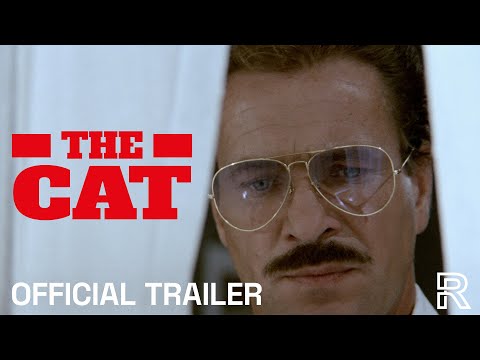
As such, the totality of the truth is always at least partially hidden or missed. And like each of the three groups of men, the viewer is also kept partially in the dark throughout, only given snippets of narrative information and left unaware of where Probek’s plan is going, even more so as it gradually begins to crumble. It’s a narrative and visual strategy operating in complete harmony even as Probek slips imperceptibly from unwavering fastidiousness into sheer panic.
Image/Sound
The high-definition digital transfer of The Cat is sharp and rich in detail, both in the sweaty, distressed faces of nearly every character on screen and the cold, steely modernist buildings within which most of the action unfolds. Some of the lower-lit scenes aren’t quite as vivid as the rest of the film, but this is by and large a strong presentation, featuring even skin tones, strong grain distribution, and color balancing that nicely handles both the cool interiors and the occasional splashes of color when blood flows or an explosion occurs. The stereo and 5.1 audio mixes both wonderfully put across The Cat’s layered sonic design, with the dialogue coming through clearly even when it’s often filtered through a telephone or walkie talkie.
Extras
In a new hour-long interview, Dominik Graf discusses the narrative and visual strategies that he employed to ratchet up tension throughout The Cat. He also shares plenty of details about the film’s production, including issues that it faced, but most compelling is a stretch where he talks about his love for Robert Aldrich. Graf also provides a select-scene commentary for three different, action-oriented scenes from the film, specifically focusing on their elaborate nature and his affinity for blending styles. Interviews with screenwriter Christoph Fromm and producer Georg Feil help to contextualize the start of Graf’s career within the German TV and film industry in the 1980s, touching on that decade’s boom of crime drama shows and the vast amount of creative freedom that their makers were given. Rounding out the package is a booklet with an essay by critic Brandon Streussnig, who deftly connects the film’s melancholic tone to Germany’s socioeconomic climate just before the Berlin Wall came down.
Overall
Dominik Graf’s offbeat heist thriller The Cat gets a strong transfer and an excellent assortment of extras courtesy of Radiance Films.
Since 2001, we've brought you uncompromising, candid takes on the world of film, music, television, video games, theater, and more. Independently owned and operated publications like Slant have been hit hard in recent years, but we’re committed to keeping our content free and accessible—meaning no paywalls or fees.
If you like what we do, please consider subscribing to our Patreon or making a donation.

